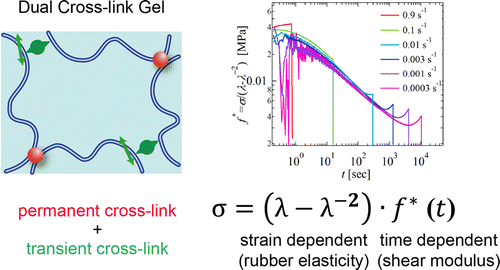Stress–Strain Relationship of Highly Stretchable Dual Cross-Link Gels:Separability of Strain and Time Effect

We studied the stress–strain relation of model dual cross-link gels having permanent cross-links and transient cross-links over an unusually wide range of extension ratios λ and strain rates ϵ̇ (or time t = (λ – 1)/ϵ̇). We propose a new analysis method and separate the stress into strain- and time-dependent terms. The strain-dependent term is derived from rubber elasticity, while the time-dependent term is due to the failure of transient cross-links and can be represented as a time-dependent shear modulus which shows the same relaxation as in small strain. The separability is applicable except for the strain stiffening regimes resulting from the finite extensibility of polymer chains. This new analysis method should have a wide applicability not only for hydrogels but also for other highly viscoelastic soft solids such as soft adhesives or living tissues.
ACS Macro Lett., 2013, 2 (12), pp 1065–1068

